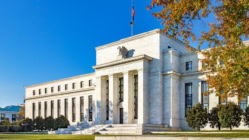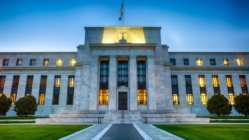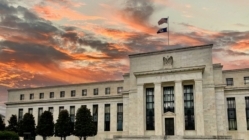
Rates bottomed out in early April, but they have been trending upward ever since – despite generally improving inflation numbers.
Given that rates almost always trend downward when inflation improves, this was very surprising. I explain why this happened though in my Monday blog: The Worst of All Worlds
TLDR: Two unexpected crises surfaced that upended the world of finance and pushed rates higher: (1) the banking crisis and (2) the debt ceiling crisis.
The banking crisis massively increased the supply of bonds, as banks and the FDIC dumped billions of dollars of bonds on the market, and the debt ceiling crisis massively decreased demand for bonds, as investors are sitting on the sidelines waiting on the outcome.
In any case, when the supply of bonds gets too high, bond prices fall and this increases yields/rates. Similarly, when demand for bonds falls, prices fall, and this too increases yield/rates.
My broader point though is this: These are two Gray Swan events that everyone considered very unlikely or did not foresee at all.
Gray Swan Theory is an offshoot of Black Swan Theory – where major unexpected events come out of nowhere and disrupt everything in unforeseeable ways.
The 2008 GFC and COVID are two Black Swan examples.
I am bringing this up because the two unexpected Gray Swans disrupted so many macroeconomic predictions that would have been correct, but for those darn swans.
Barry Habib, for example, has been screaming “inflation will fall and rates will fall” over and over for about a year now.
And Jeff Snider has been screaming that inverted yield curves and falling demand means recession and lower rates too.
Both were mostly right, and both will likely be proven 100% right, but the Gray Swan events definitely delayed their predictions.
So – here is my other point: we should expect more Gray Swans, without a doubt, in these extremely precarious times – with record debt levels, world trade falling off sharply, banks still teetering, commercial real estate on the ropes, the fastest interest rate increases in history, inflation signals persisting, and a very divided government, among other things.
So What Happens to Rates When the Debt Ceiling Is Raised?
According to Google’s AI, Bard, if there is not a lot of drama, rates will go down, as investors will feel confident in buying government bonds. But, if there is a lot of drama associated with the debt ceiling increase, rates will go up because investors will still be nervous and demand higher yields/rates.
What Bard misses though is the supply factor. Even if the debt ceiling is increased without a lot of drama, there will be an enormous increase in the supply of bonds hitting the market (because the government needs to borrow a lot of money very quickly to replenish its accounts), and that will push rates up.
So, I think we will have a push/pull effect: more confidence in the government will push rates down, while an increased supply of bonds will pull rates up – in the short term.
Over the long term, I still think we are in a world of hurt economically, based largely on the opinions of Jeff Snider, Stephanie Pomboy, Alf Peccatiello, and others, and that will ultimately result in much lower rates – as I have been predicting for some time.
I just think there will be more swans along the way.
Jay Voorhees
Founder | JVM Lending
(855) 855-4491 | DRE# 1197176, NMLS# 310167
























